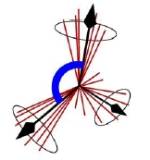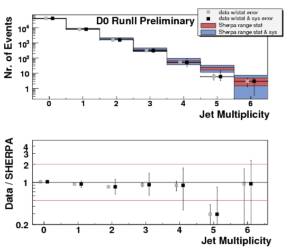|
|
Monte Carlo Tools
Monte Carlo (MC) event generators are central to high energy particle physics. They are used in the analysis of almost all experimental data to simulate the event features of signal processes and their backgrounds. They are crucial for relating experimentally measured variables to the parameters of the underlying theory that we wish to probe. They have been, and will continue to be, an indispensable part of the discoveries of new particles and interactions. They are also widely used by theorists and experimenters to simulate the physics of future experiments and help define their operational requirements. Monte Carlo simulations start from the fundamental high energy interactions and predict the stable particles which interact in particle physics detectors. As this involves many different physical processes it uses ideas and methods from most areas of phenomenology. This is an important area of our research programme which started with the appointment of Richardson in 2004 and strengthened with the appointment of Krauss in 2006.
The IPPP is unique in taking a leading role world-wide in the development of two different multi-purpose Monte Carlo event generators.The IPPP is leading the development of HERWIG++ and SHERPA . We are also playing a leading role in the Marie Curie Research and Training Network MCnet which aims to develop Monte Carlo Event Generators for High Energy Physics.
In order to validate the Monte Carlo event generators, their results must be compared with experimental data, usually taken at collider experiments such as LEP at CERN or Tevatron at Fermilab. In many cases, global observables are helpful to check that certain physics effects are properly accounted for.
|

|
One such observable is the azimuthal decorrelation of the two leading jets, produced e.g. at hadron colliders such as the Tevatron, which is closely related to the pattern of additional QCD radiation. In fact, without this further emissions the two leading jets would be oriented strictly back-to-back; the more radiation occurs, the more this correlation is attenuated.  
|
|
Another way of checking the correct amount of QCD radiation is to test whether it produces the right amount of hard radiation, which ultimately manifests itself as jets, sprays of particles hitting well-separated regions of the detector. Typically this is a regime of QCD where Monte Carlo event generators do not perform too well; only recently methods have been developed that overcome this deficiency. To test them, one of the standard processes is the production of a Z-boson, in addition with a varying multiplicity of jets.
|

|
|
|